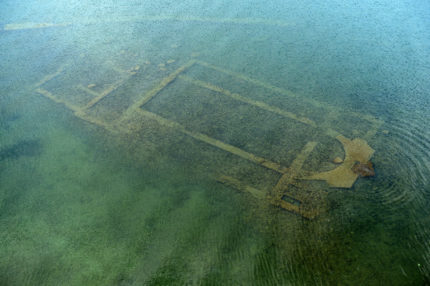The ancient early Christian basilica that sank into Nicaea’s Lake Ascanius (modern-day Lake Iznik) in the 8th century has opened as an underwater archaeological museum for visitors to explore using specialized diving equipment.
The basilica was spotted during an aerial photography survey of Iznik in early 2014. The mission was to make a thorough inventory of the historical sites in the city, and the structure in the lake with its unmistakable basilica floorplan was clearly visible from above.
The church, built in the 4th century, was dedicated to Saint Neophytos who had been martyred in 303 A.D., just 10 years before the Edict of Milan proclaiming religious toleration in the Roman Empire was issued by emperors Constantine and Licinius. It was built on the shore of Lake Ascanius on the spot where he was said to have been killed.
The basilica became a site of pilgrimage in late antiquity and the early Middle Ages, but it was felled by a catastrophic earthquake that devastated Nicaea in 740 A.D. Since its rediscovery, underwater archaeologists have been excavating the site and have found evidence of visitors from distant lands — a memorial stamp of the Scottish knights who are believed to have been the first foreign pilgrims to the church of Saint Neophytos — as well as artifacts predating the construction of the basilica. Coins from the reign of emperor Antoninus Pius (r. 138-161 A.D.) indicate the site may have had a pre-Christian temple or public building (like, oh, say, a basilica whose basic architectural plan formed the core of the Christian churches that took their name).
